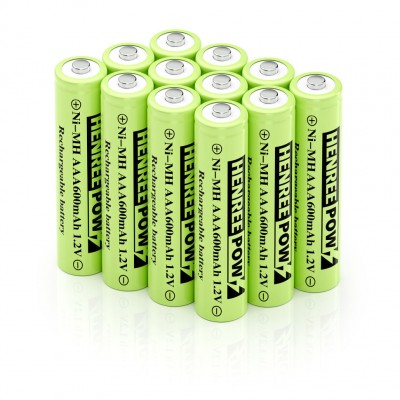In today's society, with the increasing awareness of environmental protection and the focus on energy consumption, rechargeable batteries have gained significant attention as an environmentally friendly, economical, and sustainable energy option. Among them, AA rechargeable batteries are widely popular due to their versatility and portability. This article will delve into the characteristics, advantages, and usage considerations of AA rechargeable batteries, while also introducing various capacity models such as 600mAh, 800mAh, and 1000mAh for selection. Additionally, we will explore the manufacturing process of rechargeable batteries.
1. Characteristics and Advantages
a. Environmental Friendliness: AA rechargeable batteries are reusable energy storage devices, making them more environmentally friendly compared to disposable alkaline batteries. Through multiple recharge cycles, they can reduce pollution and minimize the negative impact on ecosystems caused by discarded batteries.
b. Cost-effectiveness: Despite the higher initial purchase cost of AA rechargeable batteries, they prove to be cost-effective in the long run due to their reusability. In scenarios where batteries are frequently used, such as digital cameras, remote controls, etc., using rechargeable batteries can significantly reduce the frequency of battery replacements, thus saving expenses.
c. Portability: AA rechargeable batteries are compact and lightweight, making them highly portable. This makes them an ideal energy source for outdoor activities, travel, camping, and other occasions. With advancements in charging technology, the charging time has been continually reduced, enhancing their practicality in mobile devices.

2. Usage Considerations
a. Charger Selection: Use a compatible charger to recharge the rechargeable batteries, avoiding overcharging or over-discharging to ensure battery lifespan and safety.
b. Charging Cycle Control: Avoid overcharging and over-discharging as much as possible, as rechargeable batteries also have a limited lifespan. Properly controlling the charging cycles can extend their usage life.
c. Storage Environment: Store rechargeable batteries in a dry, well-ventilated, and dark environment, avoiding high temperatures or humidity to maintain battery performance and safety.
d. Regular Inspection: Regularly inspect the appearance and performance of rechargeable batteries. If any damage or abnormalities are found, promptly replace or repair them to avoid safety hazards.
3. Selection of Different Capacity Models
AA rechargeable batteries are available in various capacity models, including 600mAh, 900mAh, 1300mAh, and others. Different capacity batteries are suitable for different devices and usage scenarios. Users can choose the appropriate model based on their requirements. Higher capacity batteries provide longer usage time and better performance but may also increase charging time and size.

4. Manufacturing Process
The manufacturing process of rechargeable batteries typically involves several key steps:
a. Material Preparation: Raw materials such as lithium-ion cells, nickel-metal hydride cells, or other suitable materials are prepared according to specific formulations and compositions.
b. Electrode Production: Electrodes, including cathodes and anodes, are manufactured through processes such as coating, calendaring, and cutting. These electrodes are crucial for the battery's performance.
c. Cell Assembly: The electrodes are assembled with separators and electrolyte materials to form individual cells. These cells are then grouped and connected in series or parallel to achieve the desired voltage and capacity.
d. Enclosure and Sealing: The assembled cells are enclosed in a battery casing, which is sealed to prevent leakage and ensure safety. This enclosure process may involve injection molding or other forming techniques.
e. Testing and Quality Control: Finished batteries undergo rigorous testing to verify performance, capacity, and safety parameters. Quality control measures are implemented to ensure that only batteries meeting specified standards are released for distribution.
f. Packaging and Distribution: Once testing and quality assurance are complete, the batteries are packaged according to customer requirements and distributed to retailers or end-users.
Understanding the manufacturing process provides insight into the quality and reliability of rechargeable batteries, ensuring informed decisions when selecting products for various applications.

5. Conclusion
AA rechargeable batteries play a significant role as an environmentally friendly, economical, and portable energy choice in modern life. Through proper usage and management, we can maximize the advantages of rechargeable batteries, contribute to environmental protection, and achieve economic benefits. In the future, with technological advancements, rechargeable batteries will further improve in performance and convenience, becoming an even more ideal energy storage solution.











